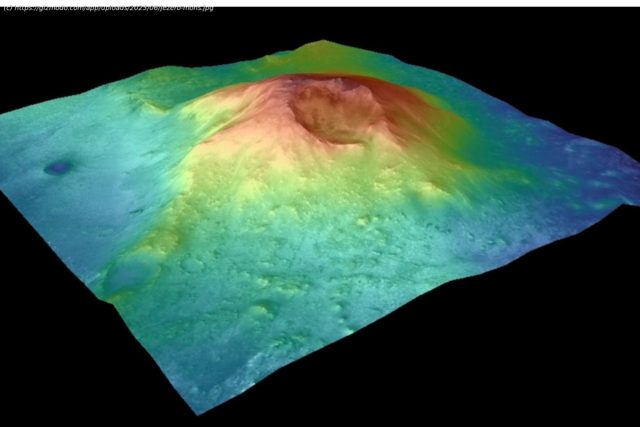The researchers posit that the volcano could have supported conditions favorable for life in the once-watery Jezero crater.
Mars’s marred surface consists of craters, canyons, and mysterious formations that hint at a complex geological past. Scientists recently studied a tantalizing feature that could shed light on the planet’s elusive history.
A mountain perched on the rim of Mars’ Jezero Crater may actually be a volcano hiding in plain sight, according to a new study. This peak, called Jezero Mons, could offer new insight into the Red Planet’s geologic history and the potential for ancient Martian life, the researchers say.
The findings, published in the journal Communications Earth & Environment in May, validate long-held suspicions that Jezero Mons is volcanic. Using data from three Mars orbiters and NASA’s Perseverance rover, researchers found striking similarities between this mountain and explosive volcanoes previously identified on Mars and Earth.
“Jezero Crater is one of the best studied sites on Mars. If we are just now identifying a volcano here, imagine how many more could be on Mars,” said corresponding author James Wray, a professor of astrogeology and remote sensing at Georgia Tech, in a university statement. “Volcanoes may be even more widespread across Mars than we thought.”
Wray has had a hunch that Jezero Mons is a volcano ever since he first laid eyes on it in 2007. “I was looking at low-resolution photos of the area and noticed a mountain on the crater’s rim,” he recalled in the statement. “To me, it looked like a volcano, but it was difficult to get additional images.






